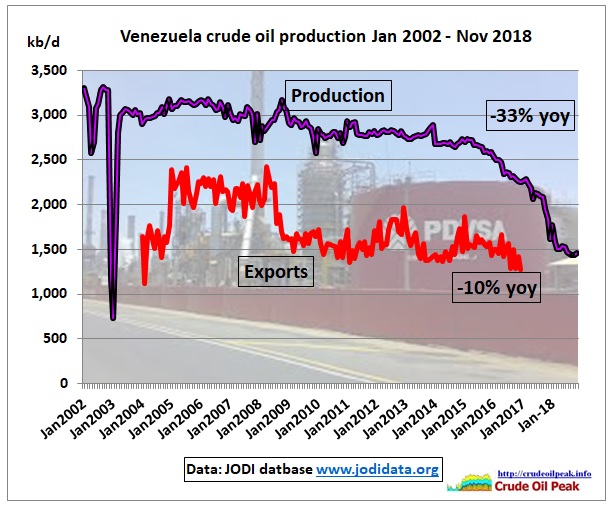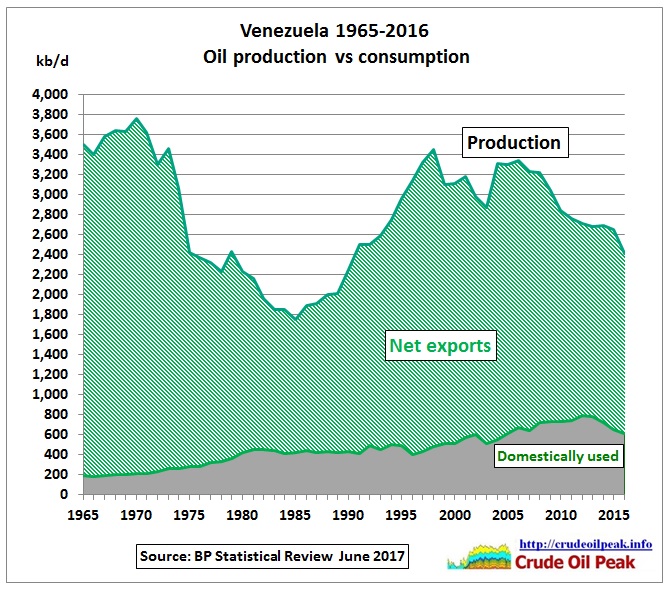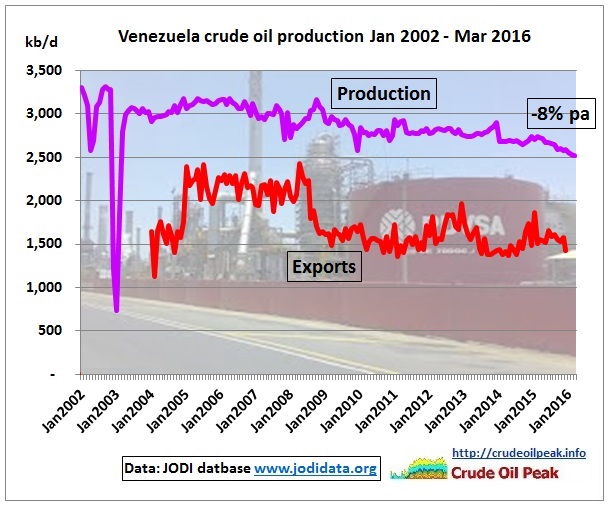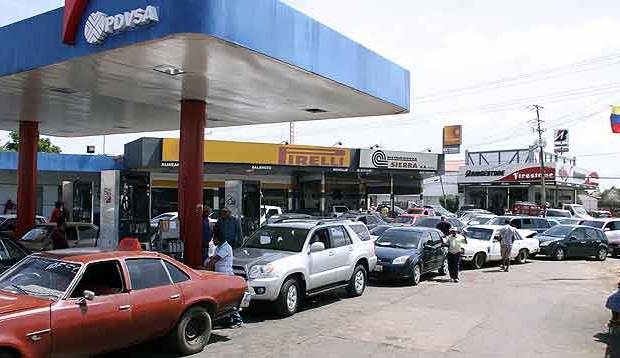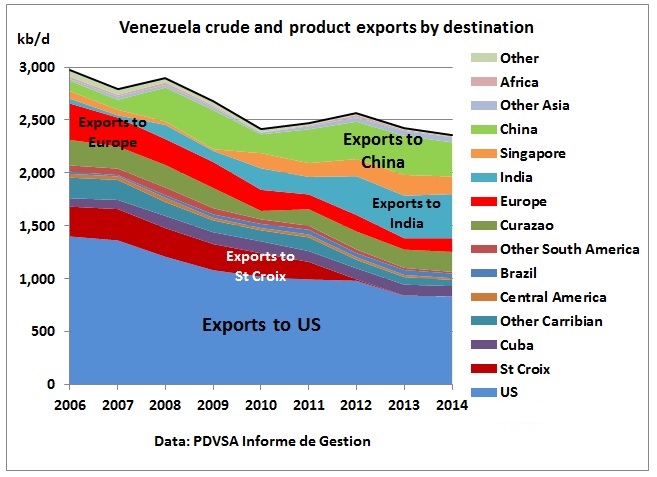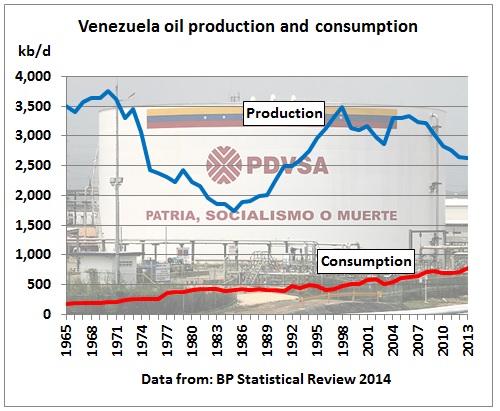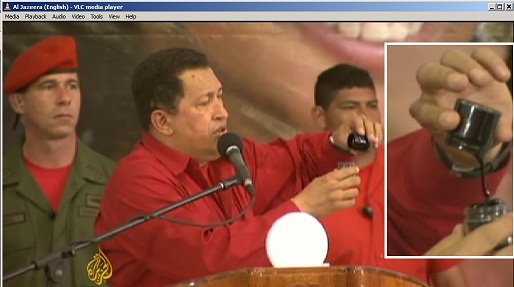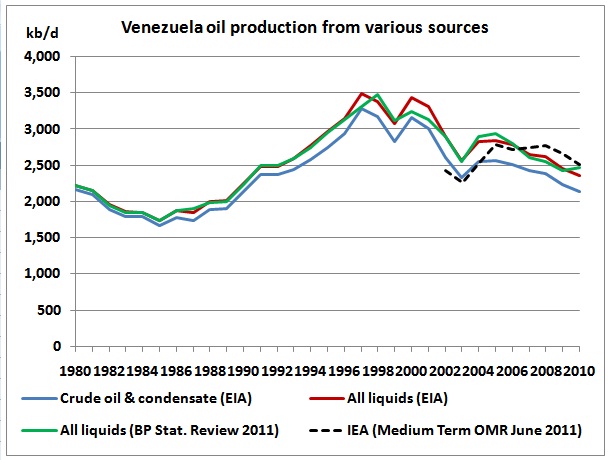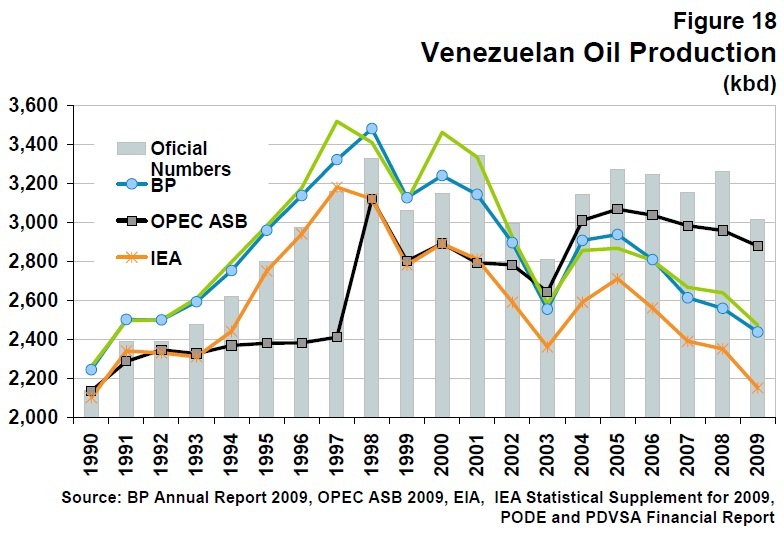Update November 2018
Update May 2018
26/5/2018
Peak oil in Venezuela: El Furrial field

http://crudeoilpeak.info/peak-oil-in-venezuela-el-furrial-oil-field
Update April 2018

Update March 2018
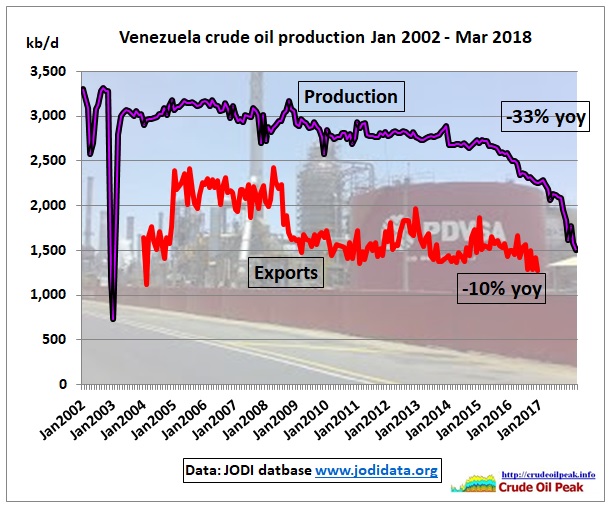
.

https://www.eia.gov/dnav/pet/hist/LeafHandler.ashx?n=PET&s=MCRIMUSVE2&f=M
Update December 2017
29/12/2917
Impact of oil production decline and low oil prices: Venezuela (part 1)
http://crudeoilpeak.info/impact-of-oil-production-decline-and-low-oil-prices-venezuela
Update July 2017
21/7/2017
External breakeven oil price $54.4 in 2016
 https://www.bloomberg.com/gadfly/articles/2017-07-21/venezuela-oil-storm-may-be-about-to-hit-the-market
https://www.bloomberg.com/gadfly/articles/2017-07-21/venezuela-oil-storm-may-be-about-to-hit-the-market
Venezuela’s crisis drains its foreign reserves
15/7/2017

Venezuela’s foreign reserves have dropped below $10bn for the first time in 15 years as chronic mismanagement, corruption and subdued oil prices continue to batter what used to be the wealthiest country in South America.
The reserves stood at $9.983 bn, according to figures published on Friday from the central bank, representing a 77 per cent decrease since January 2009 when they hit a peak of $43bn
https://www.ft.com/content/33efd9ce-625c-11e7-91a7-502f7ee26895
Update June 2017
Update April 2017
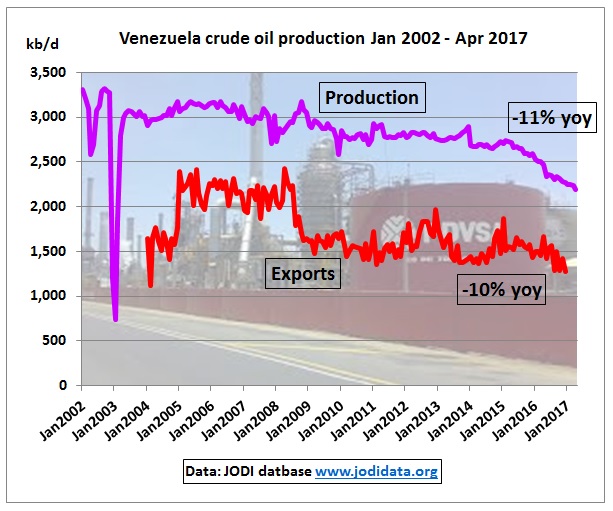
June 2016
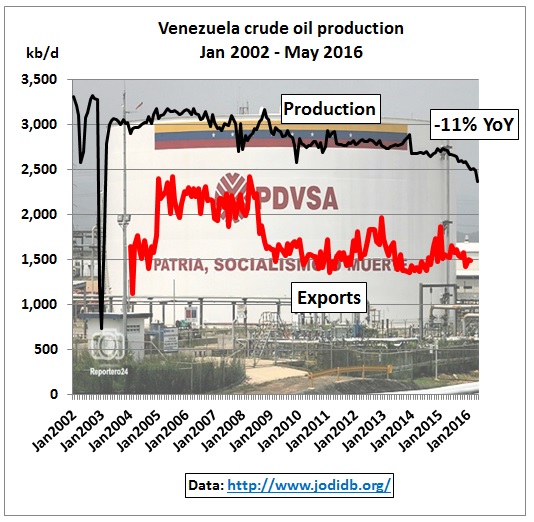
May 2016
April 2016
Venezuela at risk of unravelling as economic, energy turmoil deepens
30/4/2016
Water levels in the Guri reservoir, which feeds Venezuela’s biggest and most critical hydroelectric dam, are dangerously low. Up to 70 per cent of the electricity consumed by the country’s 30 million citizens comes from the dam.
http://www.el-nacional.com/economia/Cota-Guri_NACFIL20160314_0002.pdf
Without enough water, the dam is simply unable to satisfy demand. If the water level continues to drop, it is not out of the realm of possibility that vast swathes of the sixth-largest nation in South America could be without power.
Rationing energy

This week, for example, more than 1,000 police and military personnel were deployed to the western city of Maracaibo, where locals blocked roads with flaming barricades and looted shops for food. About 100 people were arrested.
http://www.cbc.ca/news/world/venezuela-energy-economy-political-crisis-1.3555192
Maracaibo is an oil producing region.
February 2016
Venezuela is making ‘surreal, suicidal’ debt payments
29/2/2016
Venezuela just made a full payment on a $1.5 billion bond, but the country is hardly out of the debt woods yet. Experts say the country, plagued by hyperinflation and a shortage of basic goods, will almost definitely default — the question is how, and when.
Venezuela’s central bank said earlier this month that the country’s economy shrank 5.7 percent, and the official rate of inflation came in at 180.9 percent in 2015. That spells trouble for the country, which has a $10 billion total debt burden for the year.
Still, the country has been able to maintain its obligations by draining its foreign currency and gold reserves — even as its citizens struggle in a deep recession. That’s despite suggestions from some quarters last year that the country could default in 2015.
Moody’s analyst Jaime Reusche said his agency’s Caa3 rating includes an assessment that there is an 80 percent chance of Venezuela seeing a default or debt restructuring, with a base-line assumption apparently for the fourth quarter of this year
http://www.cnbc.com/2016/02/29/venezuela-is-making-surreal-suicidal-debt-payments.html
Gasolina aumentó 6.000% al pasar de 0,097 a 6 bolívares
17/2/2016
http://www.el-nacional.com/economia/Gasolina-aumento_0_795520663.html
Venezuela increases 2-cent petrol prices to 85 cents a litre
18/2/2016
http://www.abc.net.au/news/2016-02-18/venezuela-increases-petrol-prices-from-2c-per-litre-to-85c/7181040
.
January 2016
IMF:
22/1/2016
In Venezuela, longstanding policy distortions and fiscal imbalances were already having a deleterious effect on the economy before the collapse in oil prices. These problems worsened as falling oil prices triggered an economic crisis, with an expected fall in output of almost 18 percent over 2015 and 2016 (the third sharpest decline in the world). A lack of hard currency has led to scarcity of intermediate goods and to widespread shortages of essential goods—including food—exacting a tragic toll. Prices continue to spiral out of control, and we expect inflation to rise to 720 percent this year, from a world-high inflation of about 275 percent in 2015.
http://blog-imfdirect.imf.org/2016/01/22/latin-america-and-the-caribbean-in-2016-adjusting-to-a-harsher-reality/
21/1/2016
Price crash puts Colombian, Venezuelan crude blends underwater
A more acute crude price slump this month has put several South American countries in the difficult position of selling oil for less than what it costs to produce, according to traders and sources at three companies in Colombia and Venezuela.
So far, the most affected crudes are blends formulated with naphtha and other imported diluents. But if the price rout that shows few signs of ending soon persists, other grades could be hit too, the sources added, potentially putting more pressure on public finances in the oil-dependent countries.
Some of the most known South American blends, which normally trade at significant discounts to benchmark Brent that has tumbled to under $30 per barrel, are fast becoming a type of ‘negative oil’ in a global glut.
Among the varieties already affected in South America are Venezuela’s Diluted Crude Oil (DCO), which is now selling around $15 a barrel and Colombia’s best seller Vasconia, offered at below $21 in spot deals LCO-VAS, sources from producing firms said.
The latest figures from Venezuela’s state oil company PDVSA show the average production cost for all its crudes is $18 a barrel
Venezuelan President Nicolas Maduro asked PDVSA on Tuesday to make a big effort to bring down production costs. “How many countries in the world can maintain oil production at $22 per barrel? A few or none,” he said.
In Venezuela, one of the crudes still making some profit is so-called syncrude, which can be sold at a premium after running through upgraders that turn extra heavy oil into a lighter one.
Traditional Boscan heavy crude, meanwhile, is also below breakeven levels estimated to be about $16 a barrel.
“If Boscan heavy crude is being sold around $12 per barrel, Orinoco belt’s DCO cannot have any profit after taking diluent costs into the account,” one of the sources said.
A barrel of a Venezuelan DCO made with naphtha is usually sold 15 percent cheaper than a crude blend, a government source confirmed. So while Venezuela’s price for Merey blend, an extra heavy crude from the Orinoco belt produced by PDVSA and its joint ventures, is currently around $17.25 a barrel, DCO cannot be sold over $15 per barrel.
According to Deutsche Bank, which has warned about Venezuela’s “dangerous” oil prices, a $30 average crude price in 2016 would widen the country’s foreign exchange deficit to $34.2 billion from a previous deficit estimated at $18 billion.
http://www.reuters.com/article/oil-latam-prices-idUSL2N14Z2ZF
Venezuela Reservas Internacionales
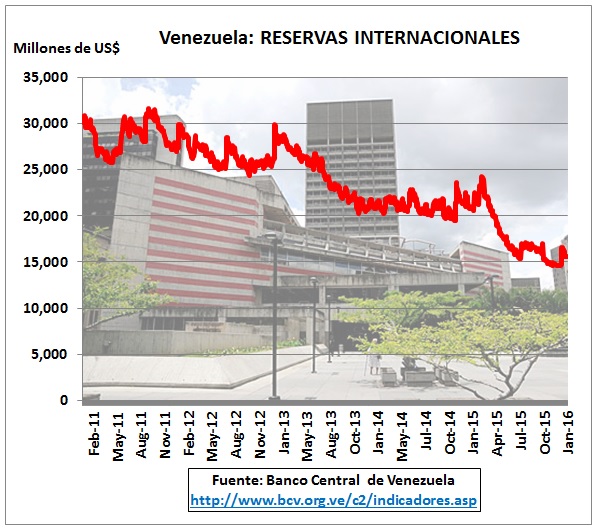 http://www.bcv.org.ve/c2/indicadores.asp
http://www.bcv.org.ve/c2/indicadores.asp
.
http://www.pdvsa.com/index.php?tpl=interface.sp/design/biblioteca/readdoc.tpl.html&newsid_obj_id=5319&newsid_temas=111
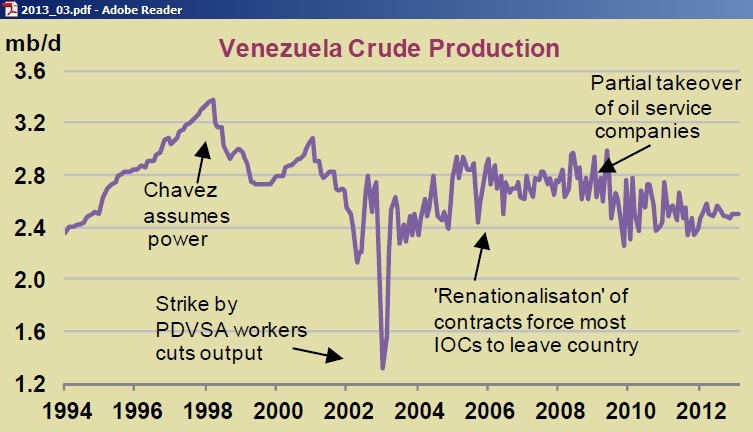 http://omrpublic.iea.org/omrarchive/13mar2013fullpub.pdf
http://omrpublic.iea.org/omrarchive/13mar2013fullpub.pdf
..
